The scariest pests are the ones that sting. Why? Their stings can hurt and if you’re allergic, they can be deadly. The fact that there are so many different types of stinging bugs doesn’t help the level of fear. You may not always know what you’re up against, but we’re here to help put you at ease. Take a look at this complete guide to stinging bugs for some peace of mind.
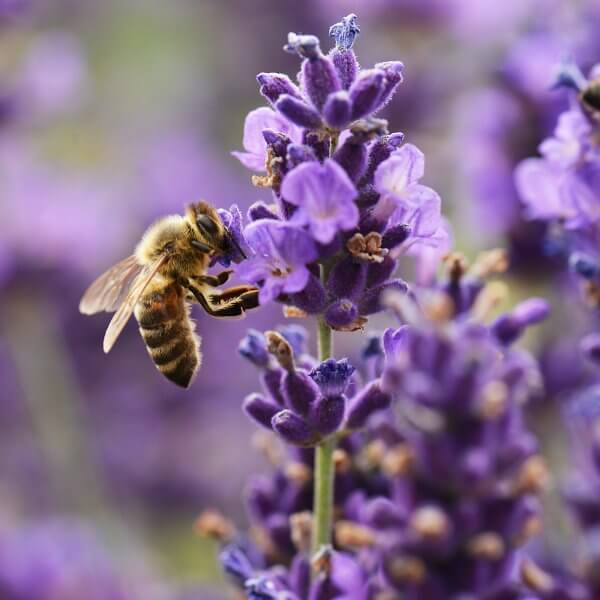
What They Look Like: A furry body with black/brown and yellow alternating stripes.
Danger Level: Medium. They only sting when provoked. Their primary goal is pollinating and making honey.
Where They Live: Hives that experience little disturbance from humans, including tree hollows, the inside of hollow walls, and empty and unused crates.
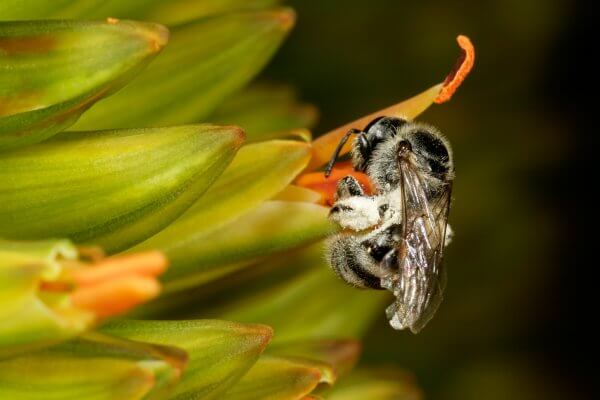
What They Look Like: Very similar to a honey bee, but slightly smaller in size.
Danger Level: High. They tend to attack in large numbers and pursue any threats when provoked.
Where They Live: Hollow areas that aren’t often disturbed by humans. These guys aren’t found throughout Georgia often, but keep an eye out for them when traveling.
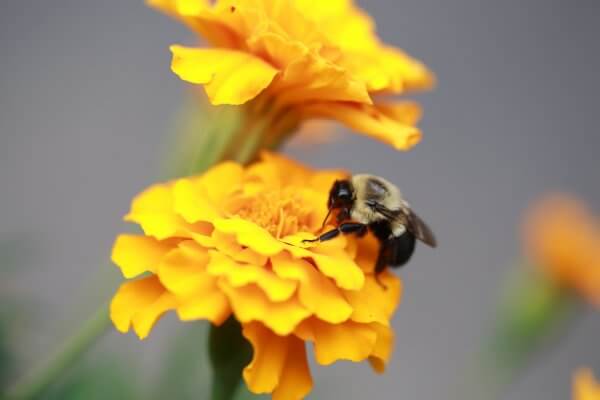
What They Look Like: Thick and fuzzy, larger than other stinging bugs with black and yellow stripes.
Danger Level: Medium. They only sting when in defense and usually mind their own business while flying slowly from one flower to another.
Where They Live: Around porches and patios, underground and in attics.
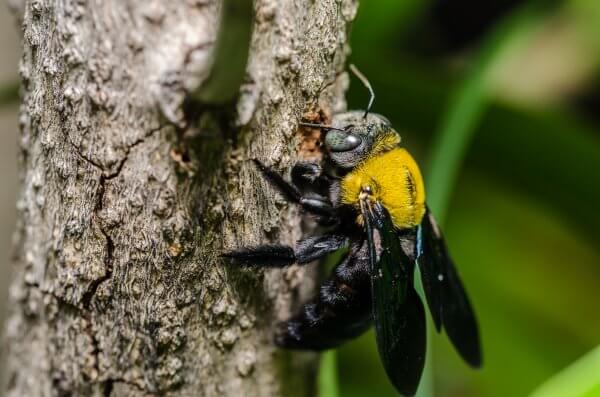
What They Look Like: Similar to a bumble bee or smaller with a black metallic appearance.
Danger Level: Low. They rarely sting but can harm wood structures by creating holes to lay their eggs.
Where They Live: They typically create holes in wood and build individual nests.
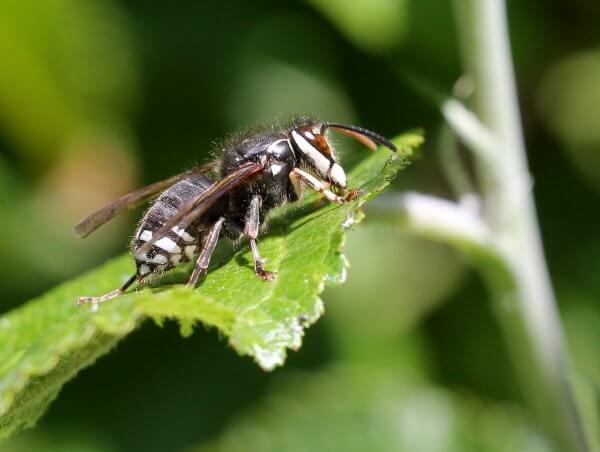
What They Look Like: White marking on their head with a black and white body.
Danger Level: Medium. They are harmless unless they are provoked by a human coming within three feet of their nest, loud noises or vibrations. A swarm will attack when provoked and try to squirt venom into the eyes of their threats if they cannot reach the threat.
Where They Live: High in trees or under overhangs of homes and porches.
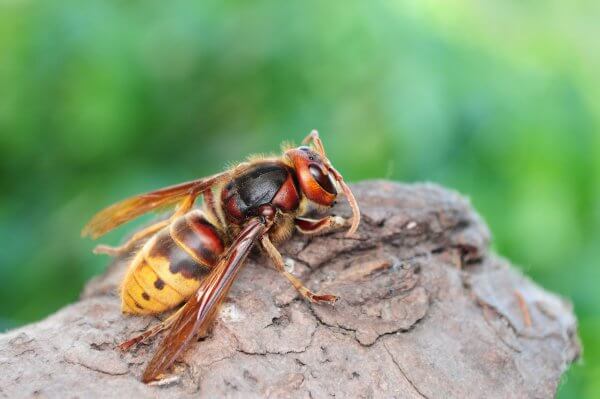
What They Look Like: Yellow heads with black eyes and yellow striped bodies with black spots.
Danger Level: Medium. They are less aggressive than other wasps but are usually found in colonies of 300 or more.
Where They Live: High tree hollows. Occasionally, attics and hollow walls.
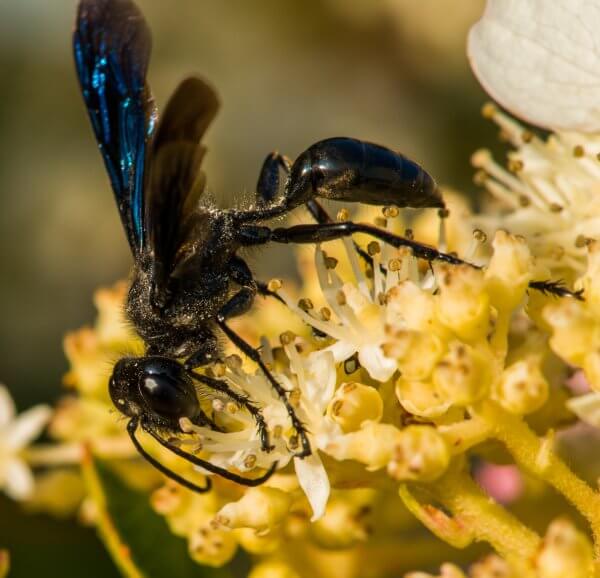
What They Look Like: Very slim bodies that are a metallic black/blue in color.
Danger Level: Low. They rarely attack and rid your homes of other insects.
Where They Live: Mud nests in sheltered areas that aren’t often disturbed.
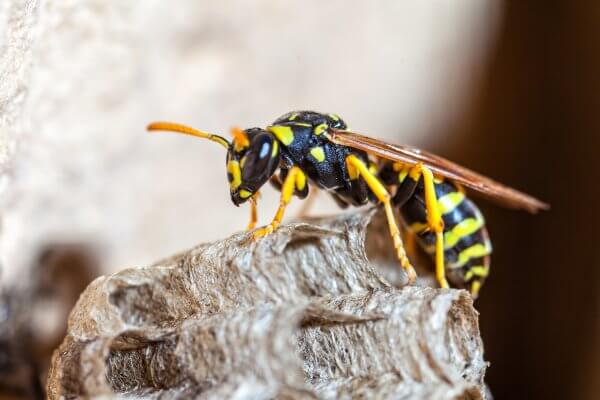
What They Look Like: Most have black and yellow stripes with slender bodies.
Danger Level: Low. They attack only when very provoked and their colonies are small. Their stings, however, are very painful. They rid your home of other insects, as well.
Where They Live: Umbrella-shaped nests under overhangs protected from rain and other wet weather
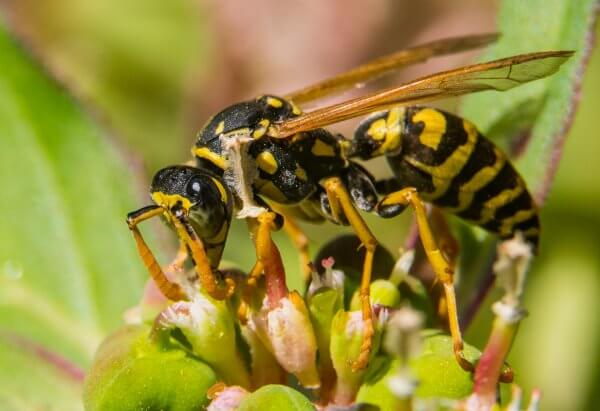
What They Look Like: Hairless bodies with black and yellow markings
Danger Level: High. They are easily provoked because they can be found in common places that could be disturbed, such as trash cans and low-hanging branches. Nests can contain thousands of them that will swarm their perceived threats.
Where They Live: Underground, wall corners, bushes, and low-hanging branches.
The good news about any stinging bugs problems is that they can be taken care of. However, most of these insects are too much for someone to take care of on their own. Bees are sensitive insects that are essential to our environment and need to be handled carefully; wasps will often cause more issues when you are trying to remove them without professional help.
That’s what we’re here for!
Don’t worry about the pain of their stings. Let us help. Get a free quote or contact us here.
June 10, 2024
June 6, 2024
May 28, 2024
May 23, 2024